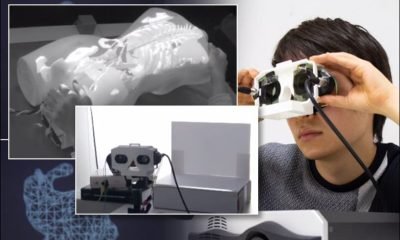Augmented Reality
How AI Is Bringing the Metaverse to Life

The Metaverse is one of the most significant rising technologies right now. In fact, the Metaverse is making such a stir in the virtual world that the social media behemoth Facebook even changed its official name to Meta to reflect the importance of the new universe.
AI is likely to play a vital role in the inclusivity and accessibility of the Metaverse, making it more functional and user-friendly. But how are these technologies shaping up to change the face of the internet and business in general?
What Is the Metaverse?
The Metaverse is essentially an entire virtual universe simulating elements of the real world. It uses various technologies such as:
- Artificial intelligence
- Virtual reality
- Augmented reality
- 3D animation
- Blockchain
The Metaverse is an extension of Web3 – a rewiring of how the internet currently works. The Metaverse and Web3 rely on blockchain technology, which changes how information is stored and owned. Advocates for the tech claim it will create new economies and products where the power is returned to the people.
The Layers of the Metaverse
There are seven layers typical of a Metaverse:
- Experience
- Discovery
- Creator economy
- Spatial computing
- Decentralization
- Human interface
- Infrastructure
How Is AI Working Alongside the Metaverse?
AI allows computers to make independent decisions primarily through machine learning. AI supports the functions of the Metaverse from a business and product perspective but also regarding inclusivity and accessibility. Let’s look at some ways AI interacts with the Metaverse.
Digital Personas
AI uses facial recognition software and other technologies to make accurate and realistic avatars for users. AI can also process a user’s mannerisms, facial expressions, and nonverbal cues to create a more accurate user experience.
Digital Humans and NPCs
In addition to making realistic avatars for Metaverse users, AI helps generate realistic digital humans, often referred to as non-player characters (NPCs) in video games. NPCs interact with users in the Metaverse as if they were real people.
Multilingual Accessibility
AI makes way for the Metaverse to be better able to process language. With AI technology recognizing the natural language and converting it into a machine-language format before processing results back into the natural language, users all over the globe can interact with the Metaverse.
Natural language processing (NLP) also gives avatars in the Metaverse the ability to use natural-sounding language.
Resolving Issues
The Metaverse often adopts algorithms from AI such as Instagram and Facebook to resolve issues. Leveraging existing AI makes for a smarter virtual world and a more enjoyable experience with fewer problems.
Education and Training
In the future, the Metaverse could be a valuable tool for education – whether in training for a new position at work or elsewhere. AI in the Metaverse provides the opportunity for users to learn in a lifelike virtual environment without the risk of facing real-world repercussions and equips teachers with virtual assistants.
A good example of education in the Metaverse could be learning how to skydive safely and without real-world consequences.
AI and the Metaverse in Business
Blockchain technology and AI allow businesses and users to create, sell, and purchase products within the Metaverse space, and they are on the brink of changing business forever. Here are some examples of how:
AIOps
AI-powered operations allow businesses to handle a business’s IT infrastructure. They can be used in the Metaverse to predict outages and identify problems as they occur. AIOps must run all the time and be scalable enough to grow alongside the Metaverse, making it very demanding to implement.
AI Bots
AI chatbots in the Metaverse can assist with marketing, customer service, and sales. They can also provide information about products or services in the Metaverse.
Digital Twins
A digital twin is basically a representation of a physical object within the Metaverse. A company might create a digital twin version of itself inside the Metaverse, allowing it to predict future problems and help problems the company faces in the real world.
Digital Assets
Users and companies can store and exchange assets in the Metaverse. They use a cryptocurrency called exchange traded products (ETP) in exchange for goods in the Metaverse.
Risks of AI and the Metaverse
Despite the perceived benefits of the Metaverse, particularly for businesses, there are still considerable risks, including:
- Deciding who will take ownership of the AI and who will profit from it.
- Challenges of transparency in a space where fraud can run rampant in the form of deepfakes or other fraud.
- Determining legal use of AI technologies in the Metaverse.
- The longstanding problem of ethics when using artificial intelligence.
The TL;DR
Bloomberg reports the Metaverse could be an $800 billion market. Supporters of the Metaverse say it will provide a decentralized world where users are in control of their data and assets. AI can be used in the Metaverse to enhance functionality and improve a user’s experience with the virtual world. However, AI and the Metaverse have some risks, particularly for businesses that choose to use them.














